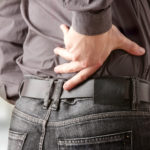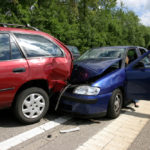How Child Car Restraints Protect Your Kid
Car Accident Lawyer
In the United States, vehicle crashes are a leading cause of death and injury among children. This makes children the most vulnerable passengers. They have comparatively weaker muscles and bones which exposes them to the risk of injuries. To protect them, you must use a car seat when traveling in a vehicle. An appropriate car seat can be a life-saving choice.
Almost all states have laws for using car seats. If you are involved in a car accident, immediately contact a car accident lawyer to enforce your rights.
How car seats protect children
When a car meets with an accident, an unrestrained passenger is thrown forward with a force that is multiple times the weight of their body. Imagine if an unrestrained child is involved in a car crash!
Just as seatbelts protect adults from the impact of a crash, car seats do the same for kids. They absorb the energy of the crash and spread it proportionately across the stronger parts of their body. This prevents them from being thrown forward in case of a crash. The shoulder belts and car seat harness keep the child’s body away from the interiors of the vehicle. They also cushion the body to protect the head and spine from trauma.
Types of car seats
There are different car seats depending on the age (and size) of your child.
Rear-facing car seat: If your child is under the age of 2 years, you must secure them in a rear-facing seat. These are specially designed to support the baby’s head, neck, and spine. If you use a rear-facing seat, ensure that you never place it in front of an active airbag.
Forward-facing seat: Once your child has reached the maximum prescribed limits of the rear-facing seat, it is time to put them in a forward-facing seat. These seats are equipped with a 5-point harness and side bolsters to secure the child and absorb the impact of a crash from all angles.
Booster seat: After your child surpasses the height and weight limits of the forward-facing seat as prescribed by its manufacturer, they can move to a booster seat. This seat raises the child up so that the vehicle seat belt can fit properly across their lap and shoulders. It is usually used for children between 8 to 12 years old who are shorter than 57 inches.
Even boosters come in different types. A high-back booster seat has head support while a backless booster seat simply props the child up.
Whichever car seat you choose, make sure that it meets the applicable federal motor vehicle safety standard.
Installing a car seat
Many people struggle with correctly installing car seats in their vehicles. You have to read the vehicle manual as well as the car seat manual. Either you can learn to install the seat yourself or get it installed. Each state has fitting stations with certified child passenger safety (CPS) technicians. They will not only install your seat but also brief you on child passenger safety. Even if you have installed the car seat yourself, we recommend you get it checked by a CPS technician for maximum protection of your child.
A perfectly fitted and appropriate car seat can save your child from injuries. It is not enough for only you to buckle up. You must secure your child too for they are the most vulnerable.
Thanks to Brad Lakin at Champions for the Injured for this Information.




